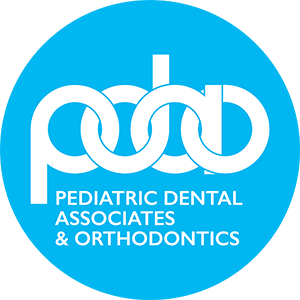Did you know one of the most common phone calls we receive after treatment appointments that require numbing is that the child has a swollen lip or that they have done something to the inside of their cheek? Parents often think their child is having an allergic reaction to the numbing agent, however, in most cases, the child has either bitten or sucked on their lip or chewed on the inside of their cheek while they couldn’t feel it. So to help you prepare for treatments that require numbing, this week we’re discussing what you need to know in order to take care of your child at home while they are still numb so you can hopefully avoid them injuring their lip or cheek!
Typically, throughout the process of the appointment, you have two options for figuring out what area of your child’s mouth has been numbed: you can either watch the hygienist or dentist during the numbing process or you can follow up with the assistant. Knowing which parts of the mouth are numbed is very important when it comes to monitoring your child after their appointment. Some children’s numbness will wear off quicker depending on how fast their body metabolizes the numbing agent, but we recommend monitoring your child for a minimum of two to three hours after they’ve left our offices.
Now, during the two to three hours while your child is still experiencing numbness, most likely they are going to want to eat something. Therefore, if they do ask for something to eat, make sure they are eating soft foods that require very minimal chewing as this will help to overcome lip or cheek biting. Another alternative if they have to chew a little bit is to have them chew on the side of their mouth that is not numb. Foods we recommend after numbing are things like mashed potatoes, macaroni and cheese, and ice cream.
Oftentimes, children will want to poke or suck on the parts of their mouth that are numb to try and have a sensation of feeling there, however try to avoid letting your child do this as it pushes their cheek into their teeth, which can result in them biting down or chewing on it. When this happens, it commonly results in the posterior part of their mouth becoming raw because they can’t feel that they are injuring their cheek.
We know you won’t be able to prevent every touch or bite of the cheek, but if it’s becoming increasingly difficult to manage them, you can place gauze in the numbed area that will help remind them to stop messing with it. If your child is returning to school or a childcare center, be sure to let them know what they need to be watching for and leave gauze with them just in case.
Unfortunately, once the biting or chewing has happened, there is not a lot we can do as an office to help, but thankfully these types of injuries do heal very quickly. It will look similar to hamburger meat when first injured, however as the tissues start to heal, they will turn white, which is a good sign to look for. Oftentimes, we recommend giving your child ibuprofen and having them rest for 24 to 36 hours and they should be good to go!
If your child does happen to injure their mouth while numb, you can call our office and we will talk you through it, and you can even send us photos through text messages. If anything persists beyond that point, we would be happy to see them in office and evaluate what steps need to be taken. We are always available by phone at (479) 582-0600, and this line can be reached after hours as well.
Find More Resources
For more educational videos and resources that can help keep your child’s smile happy and healthy, check out our YouTube Channel! Make sure you subscribe and click the bell to receive notifications when we drop our latest videos!

